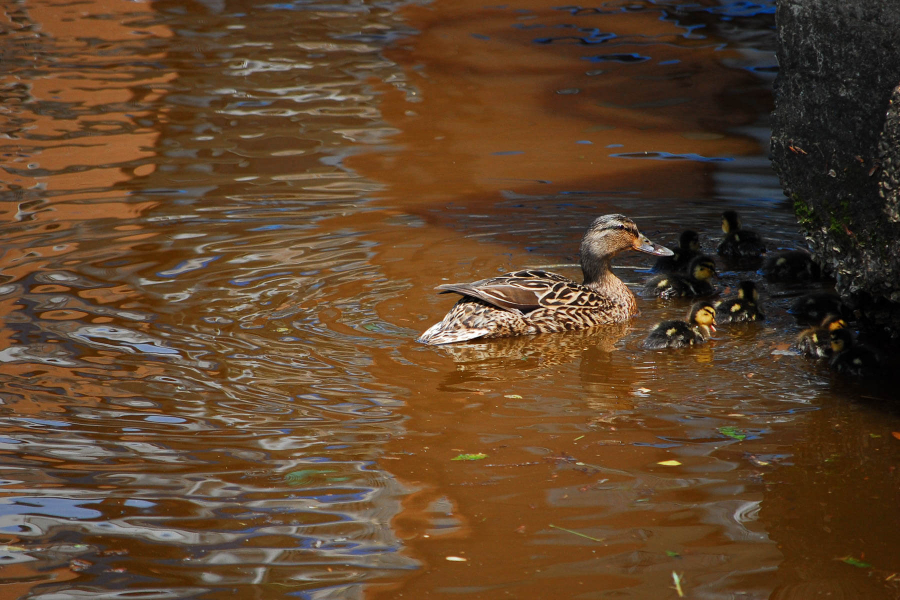A harmful algal bloom caught red handed

In late spring, a single-celled organism called Prorocentrum minimum begins to form into dense algae blooms within the Chesapeake Bay’s rivers and tributaries. These blooms turn the surrounding water into a brownish-red hue, and for that reason, are often referred to as “mahogany tide.” Mahogany tides that occur in brackish waters should not be confused with “red tides,” which persist in the salty ocean waters.
Several factors impact the formation and density of P.minimum in the Bay; these include water temperature, salinity, sunlight exposure and harmful nutrients. Land fertilizers and sewage overflows are among some of the most significant contributors to an overabundance of nutrients in the Bay. Heavy rainfall can further exacerbate the problem by increasing runoff from lawns, farmlands, urban areas and overflowing sewage systems.
While the mahogany tide is not harmful to humans, the Center for Disease Control suggests that swimmers, kayakers, fishers and waders should avoid contact with all algal blooms. P. minimum is considered a harmful algal bloom because of its ability to alter local food webs. Heavily populated blooms block sunlight to underwater grasses, which help keep our waters healthy and provide food and shelter to fish and wildlife. When these blooms eventually die and decompose, they remove dissolved oxygen from the water that many organisms need to survive, which can result in fish kills and create dead zones. Often, a foul odor accompanies these discolored waters. Algal blooms can be disintegrated through filter feeders such as oysters and menhaden, which consume P. minimum, as well as increasing temperatures that surpass the mid 70’s (Fahrenheit).
While P. minimum occurs naturally in the Chesapeake Bay, air pollution and runoff intensify the frequency of algal blooms. Each year, experts keep a close eye on how harmful algal blooms impact the Bay. Both the Maryland Department of Natural Resources and Virginia Institute of Marine Science post daily monitoring forecasts. Widespread blooms not only impact the ecosystem but also deter recreation and make seafood harvesting more challenging. As the issue of climate change grows throughout the Chesapeake watershed, meaning more substantial rainfall and other extreme weather patterns, the reduction of persistent nutrient pollution becomes increasingly essential to improving the Bay’s health.

Comments
There are no comments.
Thank you!
Your comment has been received. Before it can be published, the comment will be reviewed by our team to ensure it adheres with our rules of engagement.
Back to recent stories